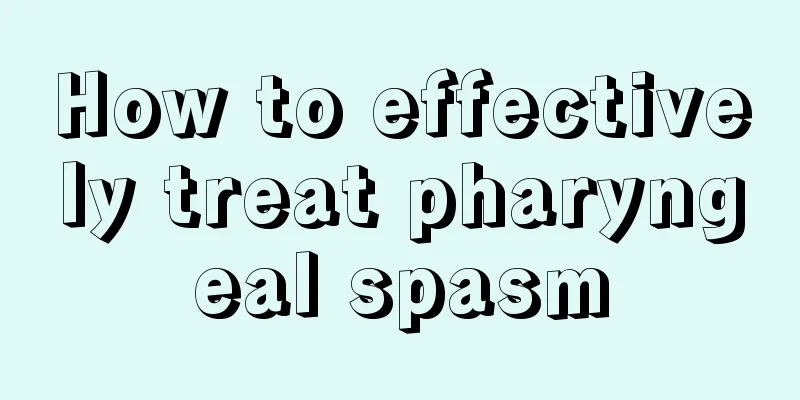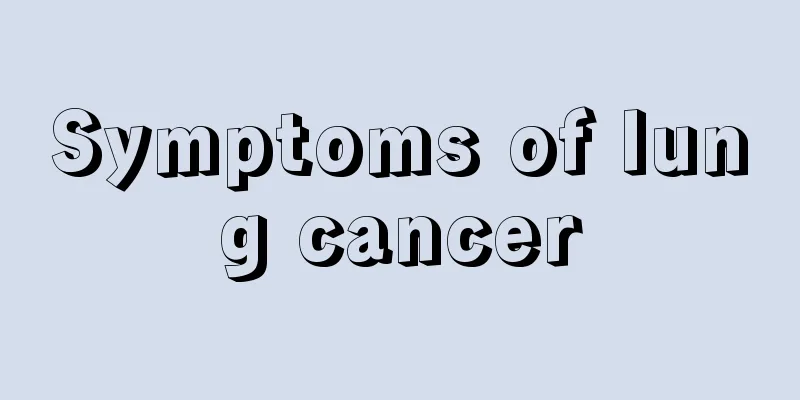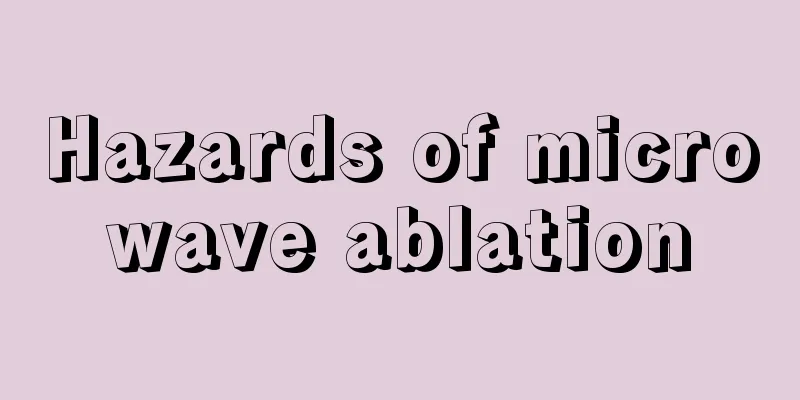How to effectively treat pharyngeal spasm

|
How to treat pharyngeal spasm? First of all, we should pay attention to understanding the cause. For example, common blood secretions in the airway or vomiting and regurgitation of gastric contents can easily cause irritation and cause the disease. The common treatment method now is surgery or lidocaine and other drug treatments. 1. Causes of pharyngeal spasm 1. Irritation to the throat caused by intra-tracheal operations, suctioning of sputum under light anesthesia, placement of oropharyngeal or nasopharyngeal airways, endotracheal intubation or extubation. 2. It is caused by stimulation from blood, secretions in the airway, vomiting, reflux of gastric contents, etc. 3. Caused by central brainstem lesions, such as brainstem vascular embolism, tumors, pontocerebellar diseases, syringobulbar disease, diffuse cerebral arteriosclerosis, etc. Differential diagnosis of pharyngolaryngitis Sore throat: It is the main symptom of oropharyngeal and laryngopharyngeal lesions, characterized by redness, swelling and pain in the throat and discomfort when swallowing, also known as "laryngeal congestion". Sore throat is seen in Western medicine such as acute tonsillitis, acute pharyngitis and simple laryngitis, peritonsillar abscess, etc. It is also a symbol of dry mouth, cold and illness. The throat muscles twitch, which may manifest as mild inspiratory stridor in mild cases and complete upper airway obstruction in severe cases. Inspiratory dyspnea and laryngeal stridor often occur suddenly at night, with panic, cold sweats, cyanosis, and suffocation, but the symptoms usually disappear immediately after a deep breath. The attack lasts for a short time, only a few seconds to 1 to 2 minutes, and can recur and occur continuously. There were no symptoms such as hoarseness or fever during or after the attack. Laryngoscopy usually shows no abnormalities. Treatment and prevention of laryngopharyngeal spasm 1. Tracheal intubation and surgical procedures should be avoided under light anesthesia, and hypoxia and carbon dioxide accumulation should be avoided. 2. It is best to extubate when the patient is fully awake. 3. Lidocaine can be used to prevent laryngospasm after extubation after tonsillectomy. Intravenous injection of 1-2 mg/kg 1-2 minutes before extubation can significantly reduce the incidence of cough and laryngeal spasm in children. However, swallowing action must be ensured at this time. |
<<: Is it better to eat sea cucumber or ganoderma lucidum for diabetes
>>: How long is the shelf life of banana chips
Recommend
Are leg slimming bandages useful?
It is said that beauty lies in the thighs. Whethe...
Can eating overnight meals cause stomach cancer?
This is because nitrosamines can easily produce c...
What if I don’t get pregnant after having sex on the day of ovulation?
As we all know, if women want to get pregnant, th...
What should I do if the wound occasionally hurts three years after breast cancer surgery
What should I do if the wound occasionally hurts ...
Headache is actually a precursor to nasopharyngeal cancer? Do you know the 6 signs of nasopharyngeal cancer?
Headache is one of the common symptoms of discomf...
The incidence of pancreatic cancer is related to the following factors
The incidence of pancreatic cancer is getting hig...
Recipe: How to pickle cucumbers
There are many ways to pickle cucumbers, but in o...
What are the treatments for rheumatoid arthritis?
Rheumatoid arthritis is not uncommon. Once it occ...
Invisible perspective glasses
As society develops faster and faster, people'...
There is a pain on the right side of the head
Many people often say that they have headaches, a...
Is vomiting after eating a full meal a sign of early-stage gastric cancer?
The feeling of vomiting after eating does not nec...
Methods of correcting proptosis
Exophthalmos correction surgery is to help correc...
Laser acne scar recovery process
With the advancement of medical technology, there...
What are the causes of increased urine volume?
Urinating is something our bodies have to do and ...
Can I exercise after treatment for advanced kidney cancer?
Can I exercise after treatment of advanced kidney...









